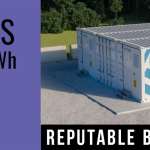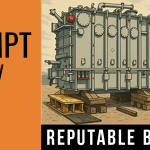 While acknowledging that the economics “vary significantly” by region and application, Navigant Research has forecast that energy storage for integration of renewables and co-located with solar or wind could be worth more than US$20 billion by 2026.
While acknowledging that the economics “vary significantly” by region and application, Navigant Research has forecast that energy storage for integration of renewables and co-located with solar or wind could be worth more than US$20 billion by 2026.
‘Energy storage for renewables integration’, a new report from the Colorado-headquartered research and analysis group, looks at the point at which the falling costs of new solar and wind generation will meet with the falling costs of lithium and other advanced batteries to converge on a ‘sweet spot’ for adding storage to generation assets.
To date, the higher value applications of batteries have been found not in their combination with solar or wind – where they could maximise self-consumption of PV or minimise the grid curtailment of wind – but in areas such as providing ancillary services to the grid like frequency response. While the huge drop in the cost of renewables has provided a driver for the addition of energy storage, the cost of the storage systems themselves still remains the biggest obstacle, authors Adam Wilson and Alex Eller said. The challenge presented in adding ever-higher shares of renewables to grids around the world means it is increasingly likely energy storage will be used as a facilitating agent.
Many factors influence the cost and suitability of energy storage for this use, including the condition, state and size of the local grid, the amount of renewable generation being added to it, local electricity rates, policies and the available options for financing. Meanwhile the industry, still in its early stages, lacks standardisation and a dearth of the aforementioned financing options, Navigant found. Complicating the picture further still is the fact that solar PV prices have dropped in some regions to the point where it would be simply uneconomical at this point to add the more expensive energy storage component.
Navigant said that while some regions have stripped back policy support for solar PV, phasing out or removing feed-in tariffs (FiTs), leading to a corresponding drop in demand from customers behind-the-meter, even some of these regions, where electricity prices are still rising, the economic competitiveness of solar and energy storage grows. The research firm also pinpointed Australia, California, New York and Germany as solid examples of regions where policy support and rising electricity retail rates have converged to see “strong deployment” of energy storage for renewables integration (ESRI).
Click Here to Read Full Article
read more
 Most of the focus on energy storage safety has been on mobile applications, given the spate of exploding laptop and phone batteries.
Most of the focus on energy storage safety has been on mobile applications, given the spate of exploding laptop and phone batteries. Deployment of energy storage, especially batteries, will increase substantially in the next few years.
Deployment of energy storage, especially batteries, will increase substantially in the next few years. Energy storage for the residential solar market has always been something of a holy grail for advanced energy companies. If storage becomes cheap enough, it could allow a rooftop solar system to provide all of the energy a homeowner needs, potentially making it possible to go off-grid. It could also be the energy hub for the home, deciding how to use energy most efficiently and connecting the smart devices that are beginning to become more common.
Energy storage for the residential solar market has always been something of a holy grail for advanced energy companies. If storage becomes cheap enough, it could allow a rooftop solar system to provide all of the energy a homeowner needs, potentially making it possible to go off-grid. It could also be the energy hub for the home, deciding how to use energy most efficiently and connecting the smart devices that are beginning to become more common.  Britain could have a 12-gigawatt battery market by 2021, according to a parliamentary policy group.
Britain could have a 12-gigawatt battery market by 2021, according to a parliamentary policy group. PALO ALTO, Calif., Dec. 26, 2017 (GLOBE NEWSWIRE) — Infinity Electrostatics LLC, a technology development firm for additive 3D printing and graphene production, is pleased to announce development of a unique process to produce a continuous formed super-capacitor to store energy.
PALO ALTO, Calif., Dec. 26, 2017 (GLOBE NEWSWIRE) — Infinity Electrostatics LLC, a technology development firm for additive 3D printing and graphene production, is pleased to announce development of a unique process to produce a continuous formed super-capacitor to store energy. On a dark and chilly winter day, generating your own electricity from solar panels perhaps isn’t at the top of your thoughts. But there’s a growing trend of linking your solar panels to a home battery to store your electricity for later.
On a dark and chilly winter day, generating your own electricity from solar panels perhaps isn’t at the top of your thoughts. But there’s a growing trend of linking your solar panels to a home battery to store your electricity for later. Last spring, Elon Musk made a daring bet. He claimed he could build and install the world’s largest grid storage battery in South Australia within 100 days of the date a contract was signed or the system would be free. The contract was signed on September 29. Installation was completed
Last spring, Elon Musk made a daring bet. He claimed he could build and install the world’s largest grid storage battery in South Australia within 100 days of the date a contract was signed or the system would be free. The contract was signed on September 29. Installation was completed 



